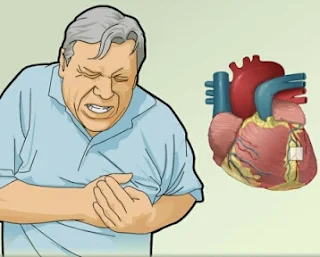Angina pectoris And dental treatment protocol
Angina pectoris
And dental treatment protocol
Is
an ischemic heart disease characterized by reduction
blood
supply of the heart muscle,
usually due to coronary artery disease
Is a clinical syndrome characterized by paroxysmal chest pain due to transient myocardial ischemia resulting from imbalance between coronary blood flow & oxygen demand
It
is characterized by:
•Temporary
•Constant
chest pain not more than 30min.
•Typically precipitated by effort & relieved by rest
Angina
Stable Angina occurs with exertion or stress
Unstable Anginaoccurs at rest or often without exertion or stress.
Variant Angina
Etiology
1-Decreased
coronary blood flow due to mechanical obstruction such as:
•Atheroma
•Spasm
of coronary artery
•Thrombosis
•Embolism
•Coronary
artreritis
2-Increased
myocardial oxygen requirement :
•Increased
cardiac output :thyrotoxicosis
•Myocardial
hypertrophy: aortic stenosis , hypertension
3-Decreased
flow of oxygenated blood :
•anemia
Angina
symptoms include:
•Chest
pain or discomfort
•Pain
in arms, neck, jaw, shoulder or back accompanying chest pain
•Nausea
•Fatigue
•Shortness
of breath
•Anxiety
•Sweating
•Dizziness
Chest
pain or discomfort is usually felt as:
•pressure,
•heaviness,
•tightening,
•squeezing
Dental management
"Unstable Angina" major risk
Elective dental care should be deferred, if care becomes necessary,
it should be provided in consultation with the physician.
Management may include establishment of an IV line; sedation;
monitoring of electrocardiogram, pulse oximeter, and blood pressure; oxygen;
cautious use of vasoconstrictors;
and prophylactic nitroglycerin.
"Stable Angina " intermediate risk
Elective dental care may be provided, with the following management considerations:
For stress and anxiety reduction:
Oral
sedative premedication and/or inhalation sedation
Prophylactic nitroglycerin
Short appointments , ideally in the morning when the patient is well-rested and has a greater physical reserve
-Provide
local anesthesia of excellent quality and adequate pain control.
For patients taking a nonselective beta blocker:
Limit epinephrine to less than 2 cartridges of epi 1 :100000
Avoid use of epinephrine-impregnated gingival retraction cord.
Avoid anticholinergics.
Provide local anesthesia of excellent quality and adequate postoperative pain control.
If patient is taking aspirin
: Bleeding usually is manageable with local measures only;
discontinuation of medication is not recommended.
Antibiotic prophylaxis is not recommended for patients with a history of coronary artery bypass graft
(CABG), angioplasty,
or stent.
👆Dental management of medically compromised patient PDF
👆Crispian skully medical proplems in dentistry
👆 Contemporary oral and maxillofacial surgery PDF
Epilepsy and dental treatment protocol
Myocardial infarction and dental treatment protocol














Comments